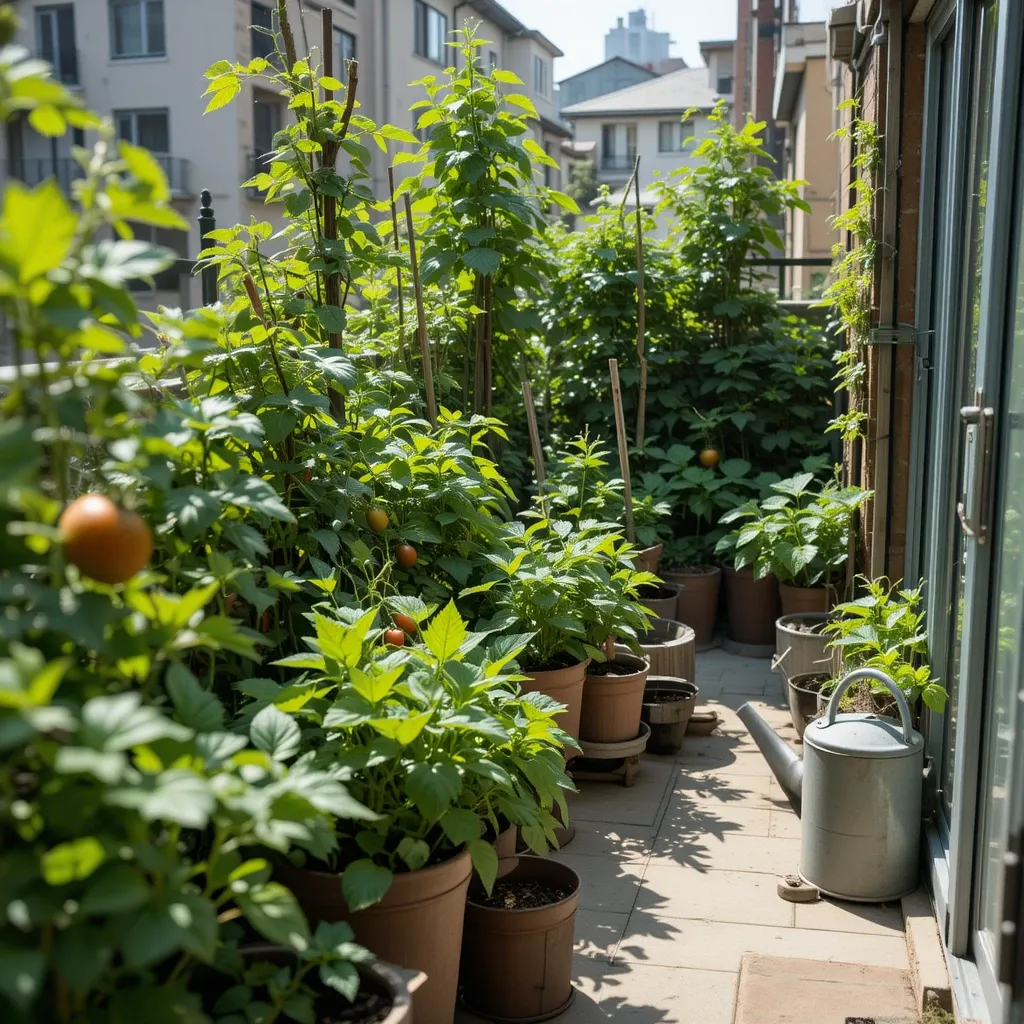
Growing a vegetable garden in a small space is both rewarding and practical. Whether you have a small balcony, patio, or just a tiny backyard, you can still grow fresh, organic vegetables with the right techniques. By utilizing space-efficient gardening methods, you can maximize your harvest without needing a large plot of land. This guide will provide step-by-step instructions to help you create a thriving vegetable garden, even in the most compact areas.
Key Benefits
- Space Efficiency: Learn how to grow vegetables in tight spaces using vertical gardening, raised beds, and container gardening.
- Cost Savings: Reduce grocery expenses by growing your own organic vegetables.
- Health Benefits: Enjoy fresh, pesticide-free produce that enhances your diet.
- Environmental Impact: Contribute to sustainability by reducing food miles and packaging waste.
- Stress Reduction: Gardening is a therapeutic activity that promotes relaxation and well-being.
Ingredients (Supplies Needed)
- Containers or Raised Beds: Choose pots, window boxes, or DIY raised beds to suit your space.
- Quality Soil: Use nutrient-rich, well-draining soil to support plant growth.
- Seeds or Seedlings: Opt for compact, high-yield vegetables such as lettuce, cherry tomatoes, herbs, and peppers.
- Fertilizer: Use organic compost or liquid fertilizers for healthy growth.
- Watering Can or Drip Irrigation: Ensure consistent watering without over-saturating plants.
- Sunlight Access: Select a location with at least 4–6 hours of sunlight daily.
- Support Structures: Utilize trellises or stakes for vertical gardening techniques.
Instructions
Step 1: Choose the Right Vegetables
Select vegetables that thrive in small spaces. Ideal choices include:
- Leafy greens (lettuce, spinach, kale)
- Herbs (basil, mint, parsley, cilantro)
- Root vegetables (carrots, radishes, beets)
- Climbing plants (tomatoes, cucumbers, beans)
Step 2: Prepare the Containers
- Select containers with drainage holes to prevent waterlogging.
- Fill them with high-quality potting mix enriched with compost.
Step 3: Planting Your Vegetables
- Sow seeds according to the recommended depth on the packaging.
- Space plants appropriately to allow air circulation and growth.
- Water thoroughly after planting.
Step 4: Optimize Space with Vertical Gardening
- Install trellises for climbing plants.
- Use hanging baskets for trailing vegetables.
- Stack planters to create multi-level gardens.
Step 5: Watering and Maintenance
- Water consistently, keeping soil moist but not soggy.
- Apply organic mulch to retain moisture and reduce weeds.
- Monitor for pests and diseases, using natural solutions like neem oil when needed.
Step 6: Harvesting Your Crops
- Harvest leafy greens by cutting outer leaves and allowing inner growth.
- Pick fruits like tomatoes and peppers when fully ripened.
- Regular harvesting encourages continuous production.
Pro Tips and Variations

- Companion Planting: Grow basil with tomatoes to enhance flavor and deter pests.
- Hydroponic Gardening: Try water-based growing systems for space-saving efficiency.
- Smart Irrigation: Use a drip irrigation system for even watering and conservation.
- Succession Planting: Rotate crops to maximize yields throughout the year.
- DIY Composting: Create your own organic fertilizer from kitchen scraps.
Serving Suggestions (Harvesting & Usage)
- Add freshly picked herbs to salads and soups.
- Use homegrown vegetables in smoothies, stir-fries, and homemade sauces.
- Preserve excess harvests by drying herbs or pickling vegetables.
Even with limited space, you can successfully grow a vibrant vegetable garden by applying strategic methods like container gardening and vertical planting. With proper care and maintenance, you’ll enjoy fresh, organic produce year-round. Start small, experiment with different plants, and adapt techniques to suit your space.
FAQs
Q: What are the easiest vegetables to grow in small spaces?
A: Leafy greens, herbs, radishes, and cherry tomatoes are excellent choices for beginners.
Q: How much sunlight do small-space vegetable gardens need?
A: Most vegetables require at least 4–6 hours of sunlight daily.
Q: Can I grow vegetables indoors?
A: Yes! Use grow lights and place plants near a sunny window for best results.
Q: What is the best soil for container gardening?
A: A high-quality potting mix enriched with compost provides optimal drainage and nutrients.
Q: How do I prevent pests in a small vegetable garden?
A: Use natural deterrents like neem oil, companion planting, and regular plant inspections.



